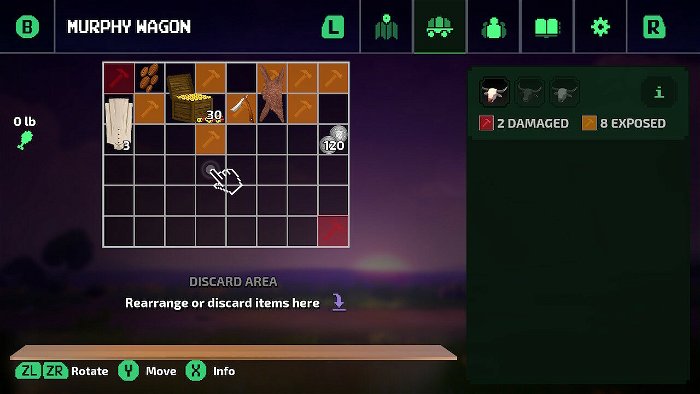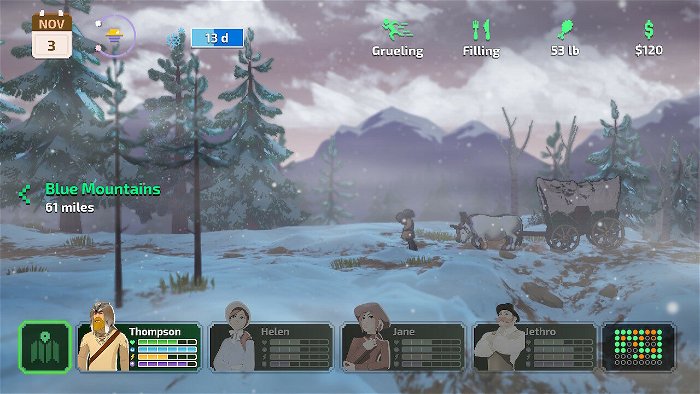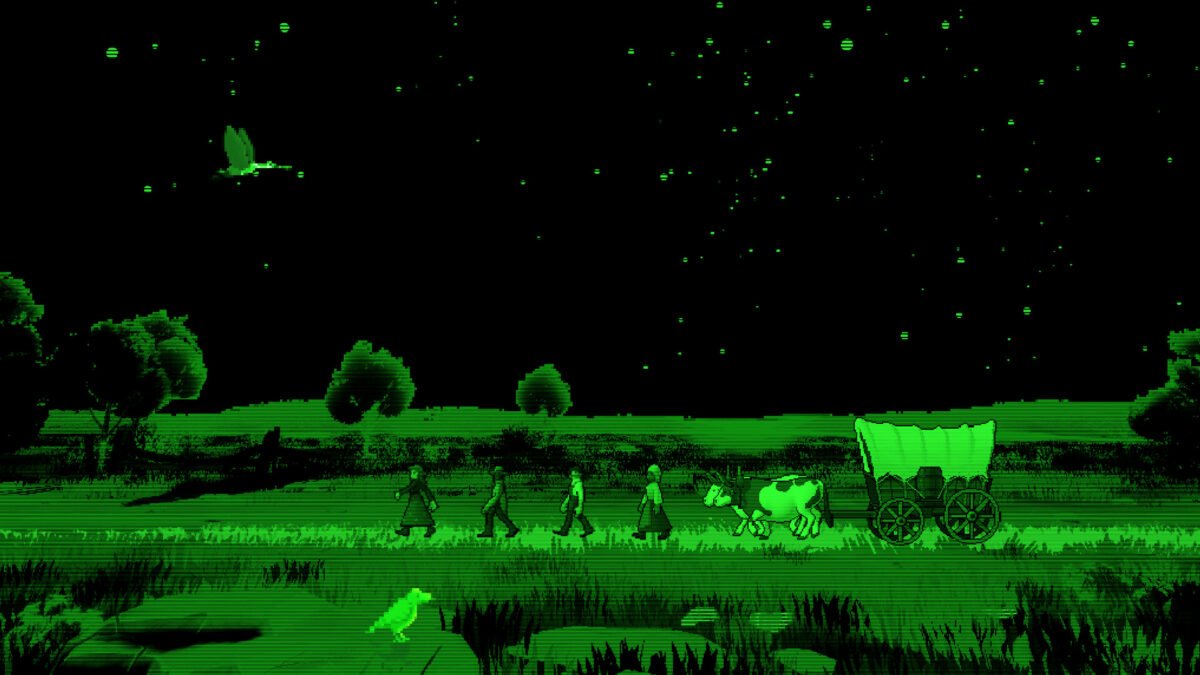Before there was Ninja Gaiden, Dark Souls, or any other game known for being notoriously difficult, there was The Oregon Trail. Originally released in 1971—though most people know the enhanced version from 1985—for the Commodore-64 and other home computers, this game was so notoriously difficult, American Dad was able to centre an entire episode around it. It’s amazing that a game with such a storied position in the halls of gaming history has never received a modern remake.
There’s been a few notable inspirations—Organ Trail was a zombie-filled take released in 2013 and was pretty true to the original, while Orion Trail was a space themed version of The Oregon Trail with a few more choose-your-own-adventure elements. Five decades since its release, The Oregon Trail has gotten a true, honest-to-goodness remake from Gameloft and apparently HarperCollins and I gotta say, it’s immensely enjoyable.

I want to start this review with a special mention of how The Oregon Trail begins. When a player loads up their save file, they are greeted with a text screen specifying how in crafting the game, the developers were determined to “better depict Native American perspectives.” They acknowledge the suffering Indigenous Peoples endured during the American expansion westward and actively collaborated with Native American scholars to bring better representation to the game.
While this doesn’t undo the immense suffering Indigenous people—both in American and Canada—endured, and are still enduring to this day, vocal acknowledgement and active engagement with a community so under-represented (often misrepresented) in gaming, is a positive first-step, and something I was genuinely refreshed to see. Especially when so often certain people treat the recognition of history and systemic racism as some kind of act of culture war.
“The Oregon Trail does feature several side stories that can be unlocked through gameplay that not only feature more complex stories and objectives, but can unlock tools and character classes in the main game.”
Anyway, now that all that serious business is out of the way, let’s talk about the game. It’s a simple enough story—a group of emigrants needs to travel from Independence, Missouri, to Willamette Valley, Oregon, ideally before winter hits and the journey becomes an almost certain death sentence. While the original only allowed you to set names for your characters, this remake has players choose from a randomized pool of settlers, each with different personalities and abilities.

While the base game is pretty standard, in terms of story, The Oregon Trail does feature several side stories that can be unlocked through gameplay that not only feature more complex stories and objectives, but can unlock tools and character classes in the main game. For a game this simple, it adds a lot of needed flavour to the proceedings and genuinely kept me coming back for more.
Gameplay is a unique blend of simple and varied, maintaining almost every aspect of the original and modernizing it. Players begin their journey—after choosing four settlers—by purchasing a wagon, stocking it with supplies and heading out on the trail. Not only do they need to manage their party’s health, stamina, morale and hygiene, but ensure their wagon is stocked with food for the long journey, and kept in stable condition. New touches bring some needed agency to the game—such as a Resident Evil 4-style inventory system, that plays into the wagon management system, as the more damage the wagon takes, the fewer spaces become available for use.
“Naturally, it wouldn’t be The Oregon Trail without some random impedances along the way.”
Players will also have more choice in what way they want to venture on their journey, as they are given waypoints between each major settlement or resting place, and each point features an event such as an opportunity to hunt for food, or engage in a potentially advantageous event. Players will also receive quests to complete along their journey, and their preparedness coupled with their choice of party will affect their success.
This enhances the aforementioned player agency, since the majority of The Oregon Trail is spent watching people walk along a trail but the ever present reality of consequence for your actions—be they good or bad—is always looming in the background. At no point was I ever bored watching my settlers blaze the trail.

Naturally, it wouldn’t be The Oregon Trail without some random impedances along the way. As players travel, any manner of things can happen—from broken bones, to snake bites, to people literally falling out of the sky. With the game’s enhanced presentation, I found this constantly engaging, especially towards the later stages of my journey when supplies were low and tensions were high. I was always clenched up waiting for the next bad thing to happen, and whenever my team stumbled upon a patch of herbs to make medicine, or supplies that had been left behind, I felt a genuine wave of relief wash over me.
Speaking of presentation, The Oregon Trail does a lot with the Unreal Engine, creating a simple two-dimensional landscape that beautifully captures the sweeping vistas of the American countryside—utilizing beautiful colours and lighting effects—contrasted against simple pixelated characters that almost resemble the models from Roller Coaster Tycoon—and I mean that in the most charming way possible. This contrast creates a game that not only looks beautiful, but pays a nice homage to the game’s simple origins.
“The Oregon Trail does a lot with the Unreal Engine, creating a simple two-dimensional landscape that beautifully captures the sweeping vistas of the American countryside…”
Combine this with a score that utilizes a whimsical, America-adventure soundtrack—complete with soaring orchestral themes and the harsh country twangs that are commonly associated with classic Western films, and you’ve got a game that is not only interesting and engaging, but looks and sounds great—a winning combination.

If I have one gripe with The Oregon Trail, it’s in the way the menus feel a bit at odds with the Switch—and possibly the PC version. The game has the feel of something that was designed for a mobile device, likely due in large part to its development by Gameloft, and it doesn’t really jive with the way buttons function in-game. Where the B button is commonly associated with the back function, in this game it operates as the defacto menu/map button, so often you’ll try to back out of dialogue or a shop menu, only to open the map.
Even more baffling is how there isn’t touchscreen functionality, despite a tutorial menu telling you if you “tap” wildlife on the trail, you can catalogue it for bonus XP—only by going to the control menu did I find out it was delegated to the Y button. It’s a particular bugbear of mine when games that are clearly made for mobile are brought to the Switch with little to no changes in functionality. They’re two very different platforms, and you need to design as such.
Nevertheless, I had an immense amount of fun playing The Oregon Trail and I would still highly recommend it. It’s a faithful recreation of one of the all-time classics in gaming, made fresh and original, and highly enjoyable. Even as a partial educational venture for young gamers, there is a lot to enjoy and experience here. Definitely worth a look.






